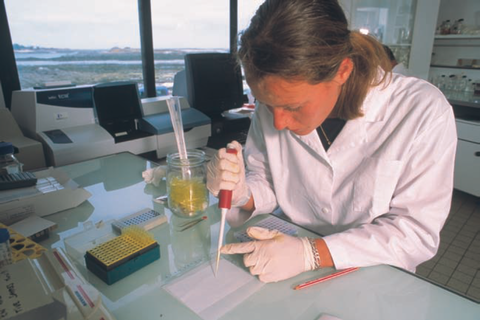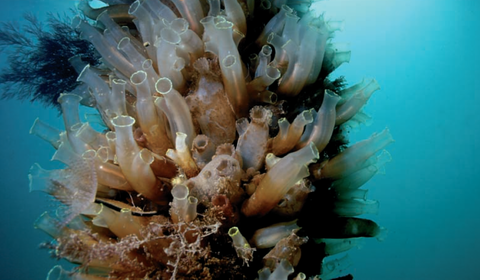The Ocean provides opportunities for human health
Contents
PATHOGENS[1]
Human pathogens are intimately linked to the ocean environment. for example, the cause of cholera remained a mystery for a long time until it became apparent that it was associated with tiny marine copepods [2]. The full pathogenic dynamics became clear after the Vibrio genome was sequenced. Cholera outbreaks can be associated with climatic events, such as the El Niňo – Southern Oscillation. The realisation that pathogens switch hosts, and hence represent reservoirs that affect man, should be considered at sea. Other links between climate and infections are further exemplified by harmful algal blooms, as well as in the intercontinental dispersal of dust and associated pathogens.
MARINE MODELS FOR HUMAN HEALTH
Nervous system development
Basic biological research within marine biology has long taken advantage of the “peculiarities”of marine “model” animals to understand basic developmental processes related to human health. For example, their nervous systems have been used to establish basic principals in neuroscience. Crab nerves and the squid giant axon featured the discovery of the mechanisms for nerve conduction, chemical neurotransmission and the marine mollusc Aplysia' significantly contributed to our understanding of nerve signalling and memory. With the rapid advance of genomic tools, several prime new developmental and neurobiological models are emerging. These include our most primitive vertebrate relative, the sea squirt, Ciona intestinalis, to understand the basis of human development and the immune system.
Medical research
Sequencing the genomes of marine organisms benefits medical research directly. One of the aims of the human genome project is to understand the function of every human gene, which is a long task. The sequencing of many different organisms enables us reconstruction of the history of every human gene, its evolution and its function. The study of marine organisms contributes significantly to this task. This is possible because we are able to manipulate and change genes in “model” organisms which can then be extrapolated to other species. Thus, the academic research aim “if it moves, sequence it” fits into a perspective of understanding basic gene regulatory mechanisms and, in so doing, provides a new means to improve the health and welfare of humans and other animals.
FORENSICS AND TRACEABILITY
Barcoding
The use of DNA in human forensics is now commonplace. Similar techniques are used in the conservation and management of endangered species, for identification of animal origin in food products, identification of poaching and illegal trading. These techniques generally involve sequencing a specific fragment of DNA from each species. There are sufficient differences in genes between species, for the sequence of DNA to act as a unique species identifier, commonly called “a DNA barcode”. Barcoding offers a simple, rapid and inexpensive means of identifying, not only whole animals, but also animal fragments, even after processing.
Conservation issues
The Consortium for the Barcode of Life plans to generate a DNA barcode database for 20,000 marine and 8,000 freshwater fish species.This will provide government agencies with a powerful tool for use in the enforcement of conservation issues. Quotas and by-catch can be more accurately monitored. In addition, comprehensive analyses of catches will provide more accurate data for understanding fish stocks and their ecological relationships.
HUMAN HEALTH, PHARMACEUTICALS, NUTRACEUTICALS AND BIOPROSPECTION
Drugs
The ocean is a largely unexplored treasure chest of pharmaceuticals, nutraceuticals and products for human and animal health. The exploration of the potential of marine biodiversity (thanks to metagenomics in terms of pharmaceutical products of high value) is still at a very early stage and requires the development of co-ordinated infrastructures as well as close collaboration between government, biotech industries and academia. So far, only a fraction of this infrastructure is in place. For example, Thiocoraline, an antitumor drug from marine fungus, is under development by PharmaMar S.A. (Spain), and sulphated polysaccharides are being investigated as antiviral drugs. In addition, the list of interesting biotech products, not necessarily medical, is growing and is discussed in the section below.
Functional seafood
In the near future, seafood may be viewed as a biotech product for human health as it has been suggested that it will contribute to reduction of the incidence of chronic disease. This will be achieved via the production of “functional seafood” containing high levels of unsaturated fatty acids, fish protein and other health promoting nutrients. Aquacultured fish selected for high levels of specific fatty acids is becoming a reality and this is clearly an area of great potential growth for the aquaculture and fisheries industries. The restricted availability of seafood resources, especially within the confines of aquaculture, requires the maximal use of safety validation in terms, not only of the fish and shellfish themselves, but also of byproducts, such as fish meal and oils, or even in nonfood applications [3]. Genomics can help with this development.
References
- ↑ Volckaert F.A.M., Barbier M., Canário A.V.M., Clark M.S., Glöckner F.O., Olsen J.L., Wesnigk J., Boyen C. (2008) Marine Genomics Europe. The European flagship of marine sciences for a sustainable future. 38 pp. Marine Genomics Europe, EC-FP6 GOCE-CT-2004-505403
- ↑ PASCUAL, M. RODO, X., ELLNER, S.P., et al. (2000). Cholera dynamics and El Niňo-Southern Oscillation. Science 289, 1766-1769
- ↑ DOSDAT, A., DESLOUS-PAOLI, J.M., HÉRAL, M., et al. (2006). Trends in European fisheries and aquaculture research. EFARO - Mediaqua Editor

